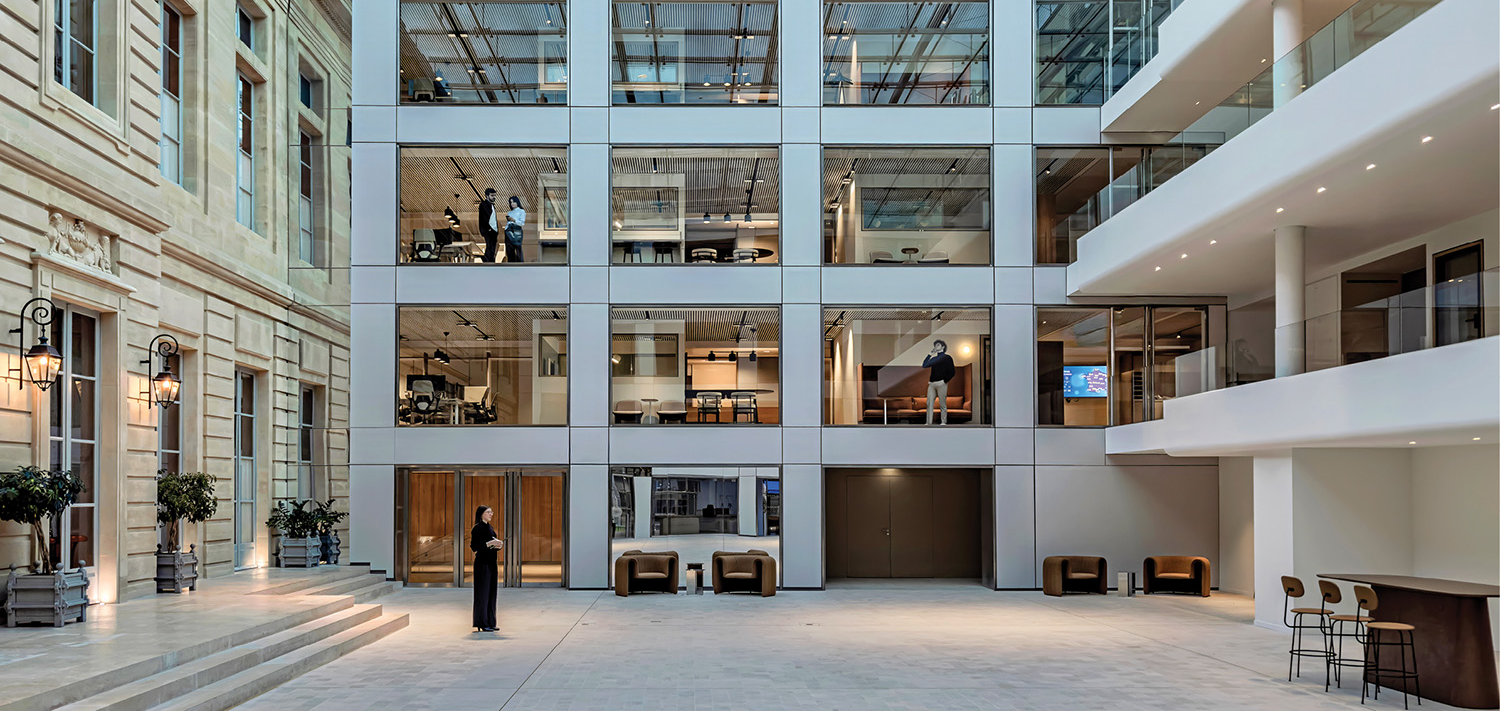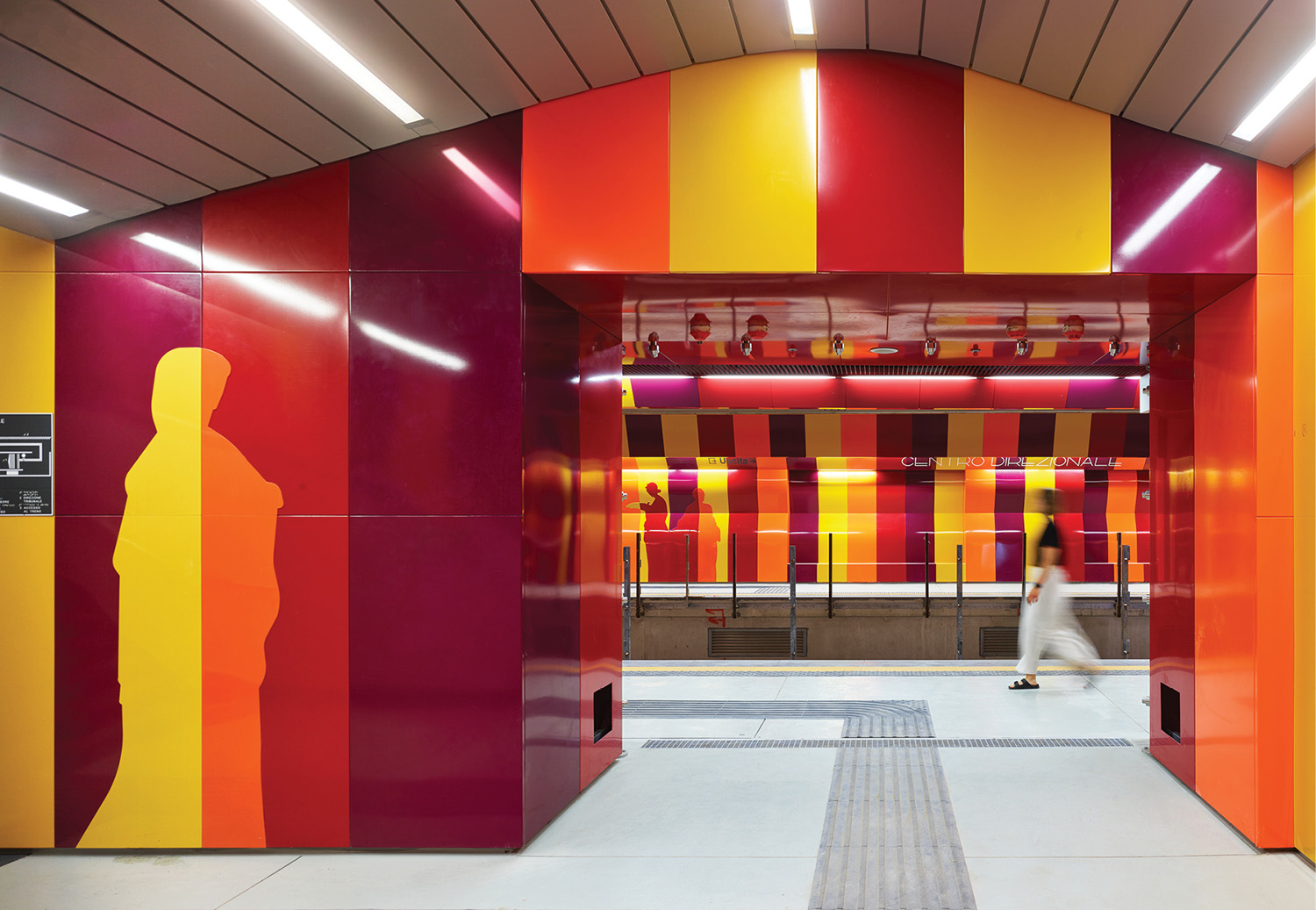The Power of Three: Swiss Firm Atelier Oï’s New Office In An Old Motel
In his childhood, Patrick Reymond had dinner almost every week at a café-bar next to a motel in La Neuveville, Switzerland. “It was run by a Neapolitan who was known for making the best pizza in the region,” he says-adding that the adjacent motel was also, he later learned, an infamous venue for extramarital liaisons. “There were lots of stories of company directors who came with their secretaries.” Reymond’s own story features the motel not once but twice. It’s now the headquarters of the studio he founded with Aurel Aebi, a fellow student from the École Cantonale d’Art de Lausanne, and Armand Louis, another native of La Neuveville.
As for the latter, it’s a sleepy town of 3,400 near the border between the French- and German-speaking parts of Switzerland. There’s a medieval castle overlooking the picturesque Lac de Bienne and the island in the middle, where Jean-Jacques Rousseau wrote and philosophized in the 18th century. Though rather unusual for a design firm with an international reputation, the location suits Reymond, Aebi, and Louis just fine. “It’s good to have a peaceful base,” Louis says. “It enables us to really concentrate on our work.”
The three named their firm Atelier Oï as a play on the French spelling of troïka. Right from the start, they adopted a multidisciplinary approach with an artistic bent. Their architecture, interiors, furnishings, and exhibition designs, Aebi explains, are often quite conceptual: “We view raw materials in a very emotional and spontaneous way, without really knowing which project they could be used for.” And those projects have been multiplying. After 10 years, the former studio, a 1950’s mechanics shop, became too small for 30 employees.
In the meantime, the motel was sitting empty and alone, the pizza café having been demolished a decade before. The 1960’s building was based on the American model, with external walkways that allowed direct access to rooms on two stories. Now wittily rechristened the Moïtel, it offers 9,000 square feet, including the basement.
While adding that “Ï” to the neon “MOTEL” sign on the roof, Atelier Oï respected the original architecture of the front facade as much as possible. Plastic window blinds were restored, balconies retained. (Though the old plastic balcony railings made way for new balustrades in punched, corrugated sheet metal.) When choosing materials for the interior, Atelier Oï was keen to reference the ’60’s-note the linoleum on the floor and the ceilings that are actually perforated plaster but could be mistaken for polystyrene. Lounge furniture, all production pieces by Atelier Oï, wouldn’t look out of place in a ’60’s house. Nor would the wool felt curtains throughout.
Changes to the rear facade were more radical. Atelier Oï built it out 5 feet, transforming the external walkways into glassed-in corridors lined, on the outer side, with bays for displaying work-in-progress. To a visitor’s eye, the contents of the bays might look like site-specific artwork. For an employee, they serve the more practical purpose of show-and-tell. “They allow us to get a sense of everything that’s going on, at the same time. Each designer can also discover ideas to develop for their own projects,” Louis explains. Larger, completed installations are exhibited in the double-height multipurpose room, which also hosts lectures and other presentations.
The basement contains the archives, a materials library, and workshops, among them one for making prototypes. Aboveground, the motel’s layout remains virtually the same, due mostly to the fact that the guest rooms’ walls are load-bearing. Almost all of these 13-foot-wide spaces have now become a shared or private office, a meeting room, a library, or a copier room. The lunchroom combines three guest rooms.
Two corner guest rooms, one on each floor, are in fact still bedrooms where visitors or interns often sleep. “The Moïtel is a place for exchanging ideas, so it’s important that people can come stay with us,” Reymond says. If they’re hungry for pizza, however, they have to go elsewhere.
PROJECT TEAM
Electro-Matérial: Lighting Consultant. Gfeller Licht- und -Tontechnkik: Audiovisual Consultant. Voillat Philippe et Serge: Landscaping Consultant. GVH St-Blaise: Structural, Civil Engineer. Herrli Haustechnik: MEP. Hartmann + Co; Luginbühl W.: Metalwork. Woder: Woodwork. Weiss + Appetito: Concrete Contractor. Ortech: General Contractor.


